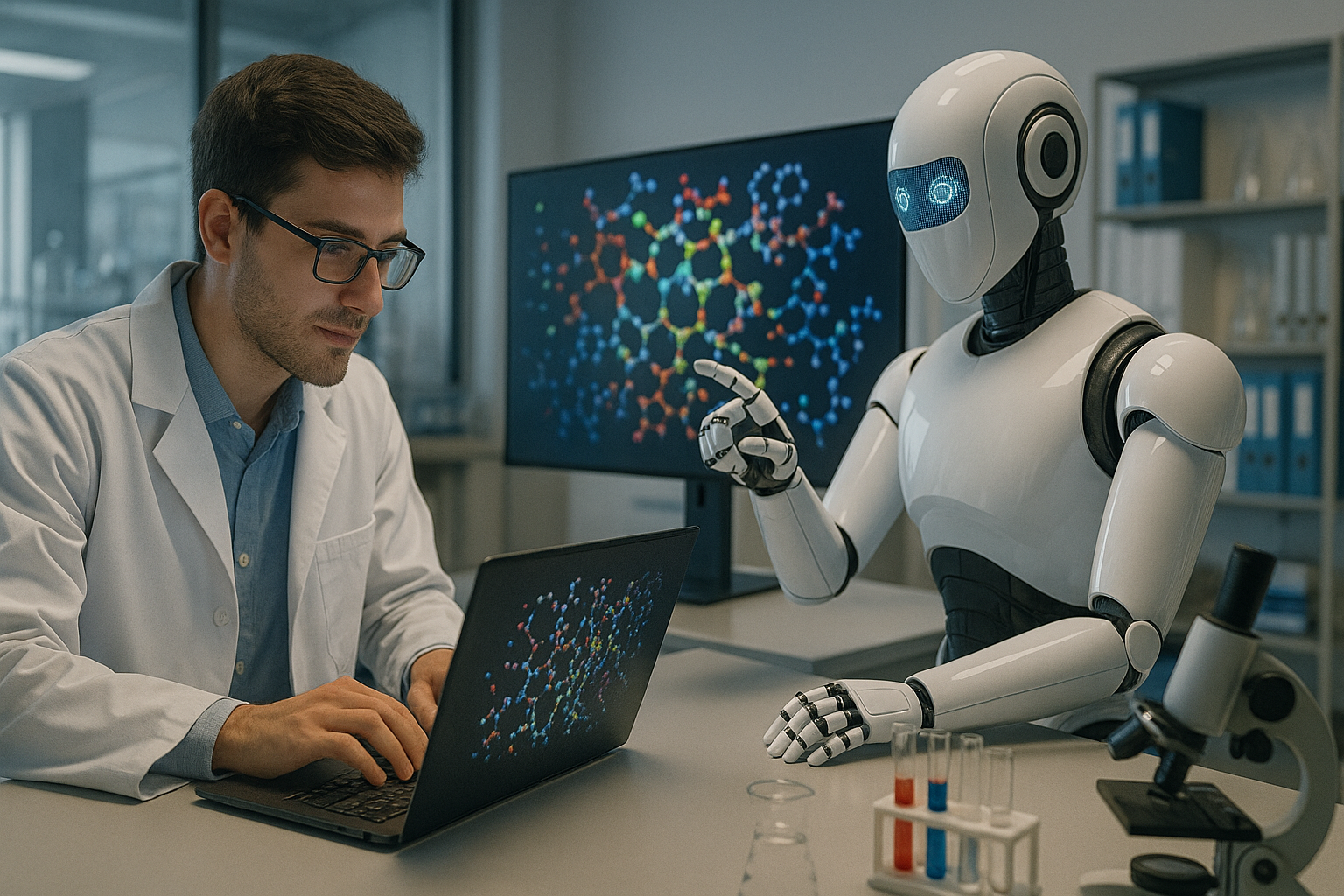Smarter AI Models Cut Costs and Boost Precision in Molecular Simulation Research
Researchers from Los Alamos National Laboratory, the Max Planck Institute, and Nvidia developed a teacher–student AI framework that drastically boosts the accuracy and speed of machine learning interatomic potentials for molecular simulations. The compact “student” models achieved quantum-level precision with half the memory and double the speed, marking a breakthrough in efficient molecular dynamics research.

The study “Teacher-student training improves the accuracy and efficiency of machine learning interatomic potentials”, published in Digital Discovery (2025), represents a major leap in computational chemistry. Conducted by researchers from Los Alamos National Laboratory (LANL), the Max Planck Institute for Polymer Research, and Nvidia Corporation, the paper was authored by Sakib Matin and a multi-disciplinary team including Alice E. A. Allen, Emily Shinkle, Aleksandra Pachalieva, Galen Craven, Benjamin Nebgen, Justin S. Smith, Richard Messerly, Ying Wai Li, Sergei Tretiak, Kipton Barros, and Nicholas Lubbers. Their research introduces a transformative teacher–student learning framework that drastically enhances both the accuracy and efficiency of machine learning interatomic potentials (MLIPs), a cornerstone technology in molecular dynamics (MD) simulations.
A New Path to Faster, Smarter Molecular Dynamics
Molecular dynamics simulations are essential tools in chemistry, materials science, and drug discovery, helping scientists model how atoms and molecules interact under different conditions. The accuracy of these simulations depends on the interatomic potentials that describe atomic interactions. Traditional force fields, while computationally fast, often fail to achieve the quantum-level precision needed for cutting-edge research. Quantum chemistry methods, on the other hand, deliver accuracy at the cost of massive computational resources that scale exponentially with system size.
Machine learning interatomic potentials have emerged as a bridge between these extremes. They learn to map atomic configurations to energies and forces from quantum mechanical data, combining speed with accuracy. However, as MLIP architectures have evolved into complex, billion-parameter “foundation models,” they have become increasingly resource-hungry. This has limited their accessibility for large-scale molecular simulations that require both precision and scalability.
Distilling Knowledge: How the Teacher–Student Framework Works
To solve this efficiency problem, the researchers devised a teacher–student learning paradigm, inspired by knowledge distillation techniques used in artificial intelligence. In this framework, a large “teacher” model first learns to predict total energies and atomic forces from quantum mechanical datasets. The teacher then generates latent atomic energies, local energy contributions for each atom that represent hidden layers of chemical information.
These latent values, though not directly observable, carry rich insights about atomic interactions. They are passed to a smaller “student” model as auxiliary training data. The student model thus learns from both the quantum ground-truth and the teacher’s encoded knowledge. This approach allows the smaller model to achieve nearly the same accuracy as the teacher, while operating much faster and using far less memory, without requiring any additional quantum mechanical data.
The researchers implemented this framework using the Hierarchically Interacting Particle Neural Network (HIPNN), a graph neural network architecture that decomposes molecular energy into atom-wise contributions. The team trained their models on the ANI-Al dataset, which contains aluminum configurations with energies and forces computed via Density Functional Theory (DFT).
Compact Models, Big Gains
The performance gains were substantial. On Nvidia A6000 GPUs using the Atomic Simulation Environment (ASE) software, the compact student models achieved over twice the simulation speed and used less than half the memory of the larger teacher models. They also outperformed “control” models, students trained without teacher guidance, demonstrating clear Pareto dominance: at any fixed computational cost, the student models achieved higher accuracy.
Accuracy was measured using metrics such as force root mean square error (RMSE), energy-per-atom RMSE, and radial distribution function (RDF), a measure of structural realism during molecular simulations. The student models consistently exhibited lower force RMSEs and smaller RDF errors than the controls, meaning they produced more physically faithful simulations. Remarkably, despite their compact architecture, these student models maintained quantum-level accuracy while operating with unprecedented efficiency, enabling realistic simulations on a scale previously thought unattainable.
Born Again: When Students Surpass Their Teachers
Perhaps the most striking finding was observed in the “Born Again” variant of the training. In this approach, the teacher and student share the same architecture, but the student’s training follows a dynamic loss-scheduling process. Initially, the model focuses on the teacher’s knowledge, but as training progresses, it shifts attention toward quantum mechanical data. This clever rebalancing allows the student to surpass the teacher’s performance.
The Born Again students achieved a force RMSE of 0.083 eV/Å, better than the teacher’s 0.092 eV/Å, and an energy RMSE of 0.37 eV versus the teacher’s 0.38 eV. This 10 percent improvement proves that the teacher–student framework is not just a compression strategy but a refinement process capable of producing superior models. By reusing existing datasets more intelligently, the researchers demonstrated that smarter training, not just larger models, can push the boundaries of molecular simulation accuracy.
A Smarter Future for Molecular AI
The implications of this research extend beyond aluminum simulations or the HIPNN architecture. Compact student models can simulate significantly larger systems, tens of thousands of atoms, on a single GPU, reducing the need for massive supercomputing resources. This breakthrough opens the door to more efficient modeling of complex materials, nanostructures, and biomolecular systems.
The authors foresee expanding this framework to include multiple teacher models and additional molecular properties such as dipoles, charges, and even cross-modal training, where models specializing in different physical quantities guide a unified student network. This could lead to foundation models for chemistry that are not only accurate and generalizable but also computationally sustainable.
Supported by the U.S. Department of Energy and Los Alamos National Laboratory, this study signals a turning point in computational chemistry and materials modeling. It shifts the focus from building ever-larger machine learning models to creating ones that learn and reason more effectively. The teacher–student framework demonstrates that by transferring latent knowledge rather than raw data, researchers can unlock unprecedented efficiency and precision, ushering in a new era of intelligent molecular simulation.
- FIRST PUBLISHED IN:
- Devdiscourse










